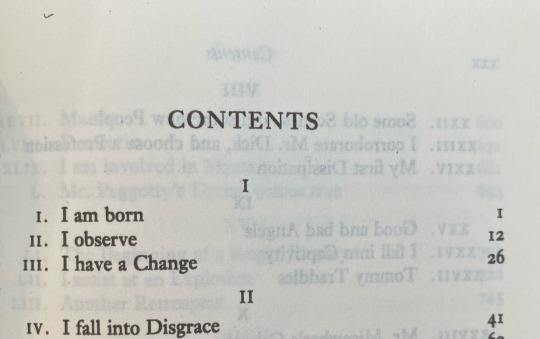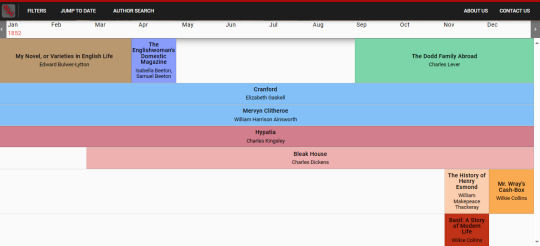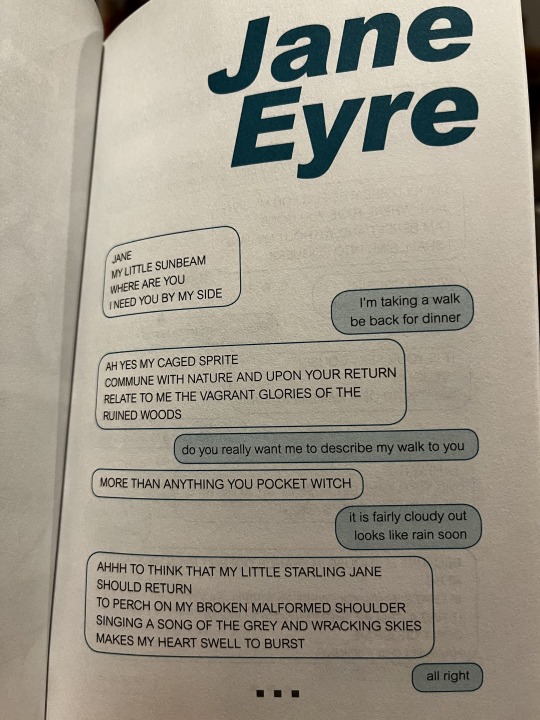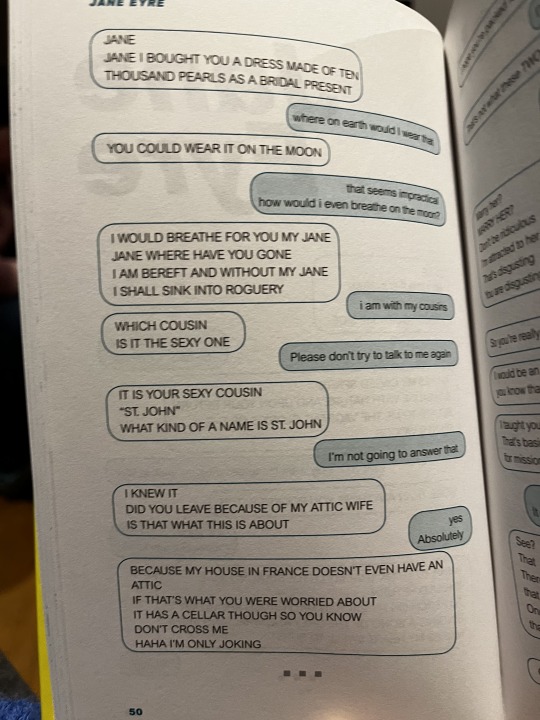#victorian literature
Explore tagged Tumblr posts
Text

Willa Cather's Childhood Home
ca. 1878
Red Cloud, Nebraska
October 2020
#mine#redcloud#nebraska#nebraska gothic#willa cather#modern literature#victorian literature#victorian house#victorian architecture#Abandoned#Abandoned buildings#Americana#American gothic#Backroads#Countryside#Dark americana#decay#Eerie aesthetic#Goth#Gothgoth#Gothic#Midwestern gothic#Midwest#Midwest gothic#Plains#Prairie#Regional gothic#Rural#Rural aesthetic#Rural america
65 notes
·
View notes
Text

nobody does chapter titles like charles dickens
#dickey why#this has actually been breaking me for the past several minutes#charles dickens#david copperfield#the personal history of david copperfield#the personal history and experience of David Copperfield#literature#victorian literature#classic lit
8K notes
·
View notes
Text
realized a lot of people probably think sherlock holmes is some logical, melancholy, serious guy. like no he's not, he shook hands with a baby and once let a criminal go because it was christmas time
#sherlock holmes#acd sherlock holmes#acd holmes#acd canon#sherlock & co#john watson#granada holmes#sir arthur conan doyle#classic literature#victorian literature#reading
1K notes
·
View notes
Text
You’re in her DMs, I’m screaming her name across the moors and she somehow hears me. We’re not the same.
#jane eyre#ask mr rochester#mr rochester#mr rochester of thornfield#ask blog#charlotte bronte#classic literature#victorian literature#the bronte sisters#gothic romance#dark acadamia aesthetic#books#wuthering heights#literature#literature rp#reading#19th century#emily bronte#victorian era#dark academia
5K notes
·
View notes
Text
oscar wilde really spent a whole chapter yapping about perfume and cool rocks and then devoted about three sentences to the murder of one of the central characters, and honestly? i see the vision
#i love you oscar but oh my god#the picture of dorian gray#oscar wilde#wilde#dorian gray#basil hallward#lord henry wotton#tpodg#victorian literature#classical literature#booklr
733 notes
·
View notes
Text
Jekyll and Hyde: the first alt account gone wrong
139 notes
·
View notes
Text









I am all in a sea of wonders. I doubt; I fear; I think strange things which I dare not confess to my own soul.
#dracula#draculaedit#dracula novel#classiclitedit#litedit#litblr#dracula daily#gothic#horror#bram stoker#victorian literature#vampires#x.#my graphics#quis est iste qui uenit#n.#books#the obsessional text#the gothic imagination
148 notes
·
View notes
Text
Taking a Victorian literature class at college rn and here’s what I learned on the first day
Hyde is Jesus
#jekyll and hyde#edward hyde#henry jekyll#gothic lit#the strange case of dr jekyll and mr hyde#trust me guys#victorian literature#dr jekyll and mr hyde
69 notes
·
View notes
Text




Richard Armitage as John Thornton in "North and South" 2004 version.
#north and south#elizabeth gaskell#north and south 2004#richard armitage#john thornton#classic literature#victorian literature#sandy welch#period drama
63 notes
·
View notes
Text
Reading Like A Victorian
A while ago, I discovered the website 'Reading Like a Victorian', a digital humanities project from The Ohio State University and collaborators.
Since tumblr's been going through a bit of a serial-literature revival, I thought I would share...
Here are some extracts from the website's 'About Us':
RLV is an interactive timeline of the Victorian period. It focuses on serialized novels [...] and adds volume-format publications for context.
When we read Victorian novels today, we do not read them in the form in which they originally came out. Most Victorian novels appeared either as “triple deckers,” three volumes released at one time, or as serials published monthly or weekly in periodicals or in pamphlet form. Serialized novels’ regularly timed, intermittent appearance made for a reading experience resembling what we do when we are awaiting the next weekly episode of Game of Thrones, watching installments of other TV serials in the meantime. Whenever we pick up a Penguin or Oxford paperback of a Victorian novel today, we are engaged in the equivalent of binge-watching a series that has already reached its broadcast ending [and is] a very different experience from what Victorian audiences were doing with novels. Reading Like a Victorian reproduces the “serial moment” experienced by Victorian readers [...]
More info and screenshots and so on below the cut:
[...] if reading serial installments at their original pace is valuable, it is even more valuable to read them alongside parts of novels and of other kinds of texts that Victorian readers could have been following at the same time [...] [...] a reader who, in 1847, had been following the part issues of both Dickens’s Dombey and Son and Thackeray’s Vanity Fair and then picked up Jane Eyre, published in volume form in October of that year, might notice in Florence Dombey, Becky Sharp, and Jane Eyre a pattern of motherless or orphaned girls trying to negotiate a hostile world on their own. While this figure is well known to be a character type in Victorian fiction perfectly embodied by Jane Eyre and Florence Dombey, Becky Sharp does not often emerge among the heroines who fit that type; reading the novels simultaneously foregrounds parallels between Becky, Florence, and Jane that are not at all obvious if their storylines are experienced separately
I find that, for browsing, the website is easier to use on a computer or tablet than a phone, but it's ok on phone to search for something specific.
The timeline:
Here's what the timeline looks like:

It shows 12 months at a time, and using the left and right arrows will move you back or forward by a month. You can use the 'Jump To Date' function to navigate to a different twelve-month period. Or you can use the 'Author Search' function to navigate to particular works if you know the author's name.
In the above screenshot of the timeline, which shows the period January to December 1852, there are several works shown, including:
ongoing serialised works which had at least one installment published prior to 1852;
works which began serialisation during 1852;
works published in three-volume format during 1852;
other works published during 1852
Details about each work:
You can click on the bar that represents a book's publication to get a drop-down that provides information about that book, its publication, and links to help you read the relevant serial parts.
Here's what happens if you click on Elizabeth Gaskell's Cranford:

On the left of the drop-down, there's some general information about the work, its publication history, and how to use the links.
On the right, there's information and links to help you experience the book in its serial parts: it separates out the parts, indicates the month and the year they were published, and what chapters of the work were published in that part. It also provides notes on each part where helpful. There is a scroll-bar at the right of the drop-down, so you can scroll down to the later installments of the work.
[I chose Cranford as an example as it helps demonstrate the value of the Reading Like a Victorian website... From what I understand, Gaskell initially wrote 'Our Society at Cranford' as a standalone piece of short fiction, but was encouraged to write more, so further pieces also set in the fictional town of Cranford were published intermittently in the same magazine over the next year or so. While a particularly dedicated Gaskell fan who wanted to 'read along' with Cranford following the original publication could probably search 1.5-years-worth of a weekly magazine to find the 9 issues which included the material which would later be published as Cranford, the Reading Like a Victorian website has already done that work for them... and also for anyone else who might be interested, but not quite that interested.]
The links
You can then click on an individual chapter to get links to various places to read it online:

When available / where possible, the website tends to include links to:
a facsimile copy of either the relevant serial part in the original publication, or in an 'annual' or similar volume collecting together the content of that publication, or a volume-form edition of that work if the work was not published serially or if facsimile copies of the original serialised publication are not available. [Most of the facsimiles are hosted by either the Internet Archive or the Hathi Trust Digital Library, but some are hosted as part of smaller, more specific collections, such as - in the case of Cranford - Dickens Journals Online which provides online access to the journals/magazines edited by Charles Dickens);
the text, usually on Project Gutenberg (this is usually the volume-form text, so the exact content and chapter breaks and so on may be different than originally published in serial parts; the Reading Like A Victorian website will generally explain when this is the case);
audio recordings, usually volunteer recordings from Librivox (again, the recordings are usually based on the volume-form text, so the exact content and chapter breaks and so on may be slightly different than originally published in the serial parts).
So yeah, I just thought it was a cool website and worth sharing. I believe the website is already used as a resource by some University courses and for academic research, but it can also be used by book clubs and to aid personal reading, etc. I'm using it to inform a personal reading project for 2024-26 where I follow along with six or seven novels serialised in 1864-66.
To save a scroll to the top, here's the link to the RLV website again: Reading Like A Victorian (osu.edu)
[If you want to join an already-planned read-along based on the original serialisation schedule, @dickensdaily will be doing Charles Dickens's historical novel Barnaby Rudge: A Tale of the Riots of 'Eighty from mid-February 2024 to late-November 2024, to follow along with the original weekly publication of the novel in Master Humphreys Clock from February 1841 to November 1841. I personally found Barnaby Rudge a really engaging, thought-provoking read, and I'm really looking forward to reading it again. (Anyone with particular triggers or other reasons to be wary of the content or language used in older books may find it helpful to look up content warnings for the book before making a decision to read it.)]
#reading like a victorian#victorian literature#victorian era#serial reading#serialisation#digital humanities#tumblr book club
285 notes
·
View notes
Text

😈
49 notes
·
View notes
Text

Best Holmes and Watson pairing EVER!
#jeremy brett#sherlock holmes#holmes & watson#arthur conan doyle#tv sleuths#tv detectives#victorian literature
50 notes
·
View notes
Text

#today on tumblr#victorian#victorian era#victorian art#1800s#victorian literature#oscar wilde#charlotte bronte#anne bronte#george eliot#elizabeth gaskell#thomas hardy#charles dickens#bram stoker#emily bronte#victorian gothic#victorian aesthetic
391 notes
·
View notes
Text


Found on family members’ bookshelf. It’s uncanny.
@tiredtiresias
#jane eyre#ask mr rochester#mr rochester of thornfield#mr rochester#ask blog#charlotte bronte#victorian literature#classic literature#gothic romance#the bronte sisters#Texts from Jane Eyre
375 notes
·
View notes
Text
"-- that look, full of love she gave him, to which he made no response, cut her to the heart with an agony of shame."
~ Leo Tolstoy, Anna Karenina (tr. Constance Garnett, Leonard J. Kent, & Nina Berberova)
#leo tolstoy#anna karenina#quotes#literature#literature quotes#literary quotes#literary quotations#quotations#19th century lit#19th century literature#victorian literature#russian lit#russian literature#classic lit#classic lit quotes#classic literature quotes#classic literature#book quotes#literary excerpts#book excerpt
427 notes
·
View notes